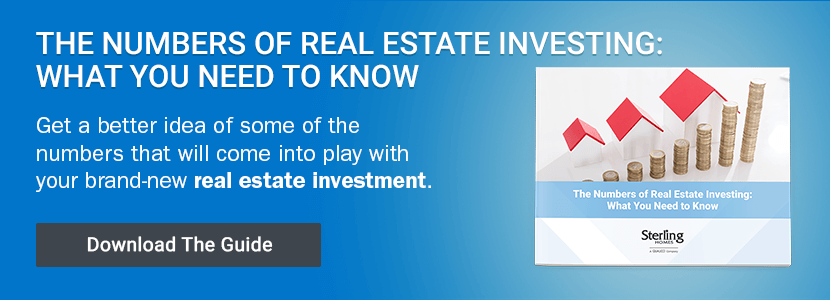Investment Property Down Payment Requirements

Income properties are all the rage these days, and it’s easy to see why. Mortgage rates are low and the demand for high-quality properties is high, so if you have a nice place to rent out, you can easily supplement or even replace your income.
The first step to your income property dreams is the down payment. Investment properties tend to be more expensive than single-family homes, and the investment property down payment rules depend on the types of properties you’re interested in. Surprisingly, there’s no one-size-fits-all answer when it comes to income property down payments. There are a lot of factors at play. We can help you learn more to help you plan and decide if it’s the right move for you.
Property Size
When you think about an investment property, how big of a space are you imagining? Are you thinking about renting out a suite in your basement or above your garage or are you thinking about a large, multi-unit apartment building?
Smaller buildings are more affordable in general, and you don’t need as much of a down payment. For instance, you can purchase a one to two-unit home with as little as 5 percent down. If you’re looking at properties with three to four units, you can make your purchase with as little as 10 percent down. There are additional rules that we’ll get into in the other sections, but it’s clear to see how easy it is to get started in property investment.

Owner-Occupied Spaces
To qualify for those low down payment rates, the property needs to be owner-occupied. That means you have to be living in the property for most of the year. The reasoning behind this is that if you’re living on-site, you’re more invested in the property. The bank doesn’t have to worry as much about damage from tenants because you’re right there to make repairs.
On the other hand, if you don’t plan to live in the building, you’ll need to come up with a 20 percent down payment to make the purchase. It can be a lot at once, which is why we see a lot of people getting started with owner-occupied properties. They use the earnings from these properties to help them save up a down payment for the next one.
Investment Property Cost
One thing to watch out for is the fact that these rates are good on properties that are less than $500,000. Many smaller investment properties are in this range, so you don’t have to worry too much. But If you’re building a new home and thinking about including a lot of extra features, you may want to pay close attention to the budget.
If the property is over $500,000, though, your down payment doesn’t automatically jump up to 20 percent. As long as it’s owner-occupied, you can pay either 5 or 10 percent (depending on size) up to $500,000, and then 20 percent of the amount that exceeds $500,000. For example, if you were purchasing a two-unit property that was $600,000 and you planned to live in one of the units, your minimum down payment would be $45,000 ($25,000 is 5 percent of $500,000, plus $20,000, which is 20 percent of $100,000, the amount that exceeds $500,000).
Residential vs. Commercial
So far, we’ve been focusing on income properties that have four units or less. That’s because these units are typically zoned as residential properties, so the rules are a little looser. If you’re looking at bigger buildings, those are going to be zoned as commercial properties, and you’ll need a commercial mortgage. Commercial mortgages usually require a 20 percent down payment, and it may be harder to qualify with just your income and credit score.

First or Second Property?
We understand that coming up with a down payment can be hard. If this is your first property and you plan to live in it, you may qualify for Canada’s Home Buyer’s Plan. This government plan allows you to borrow up to $35,000 from your RRSP. Couples can each take advantage of the plan, for a total of $70,000. This is money that you’ll have to pay back, but it’s a good way to get started in investment. When you are getting income from your tenant(s), it will be easy to repay the loan.
For many first-time investors, getting the down payment for an income property is not much different from getting a down payment for a traditional residential home. And the benefits of owning income properties are clear. Let Sterling Homes show you what some of these homes look like. We think you’re going to be hooked on the idea of investing.
Related article: Down Payments Explained
About the Author:
Learn more about:
Sterling Homes - Home Builder in Edmonton
Start The Home Buying Process Now












